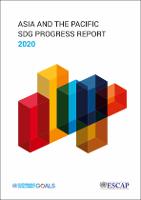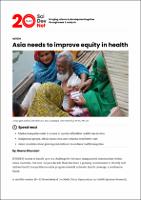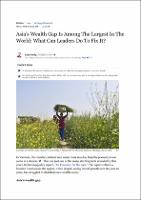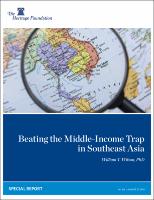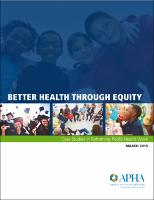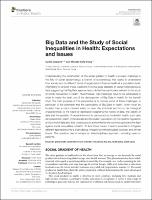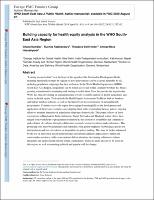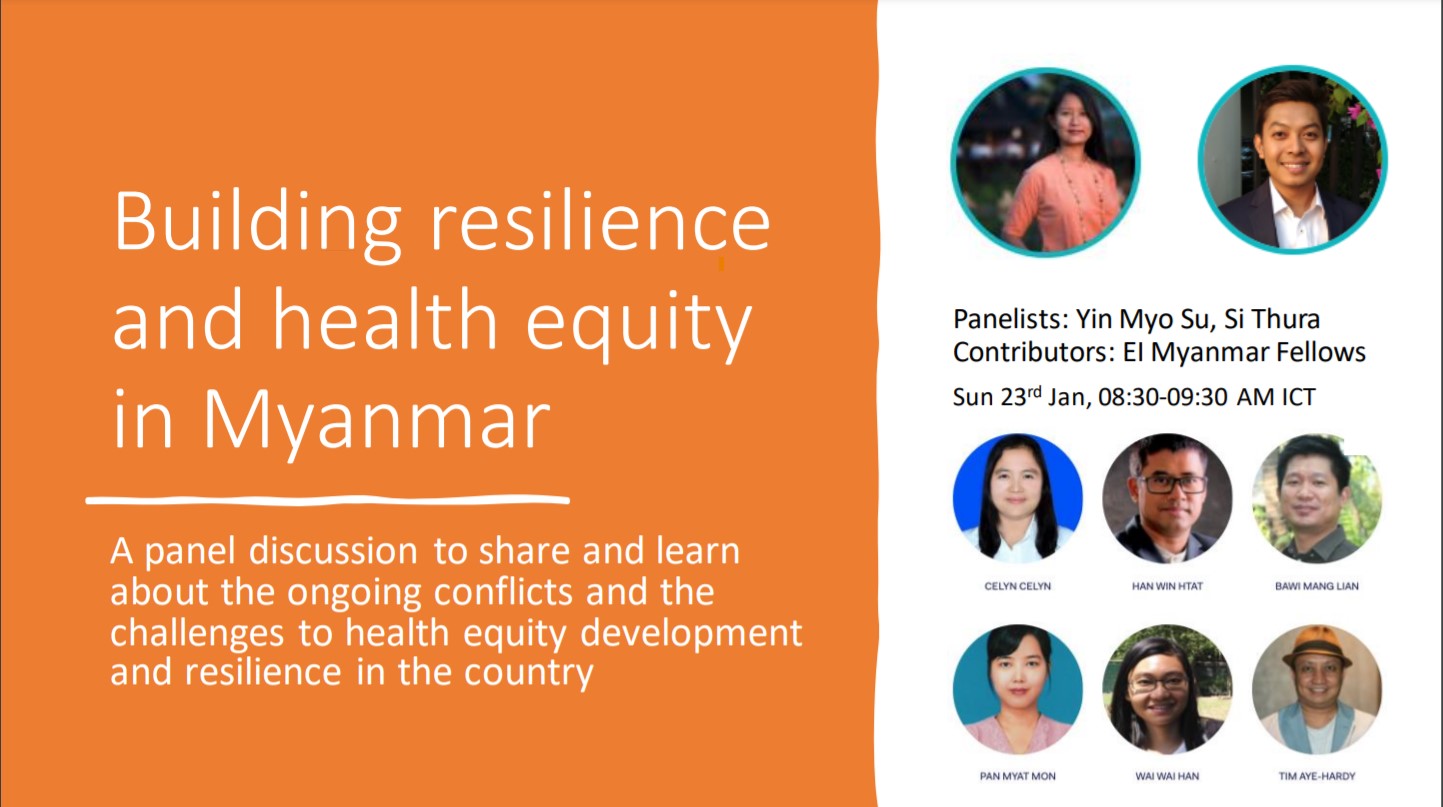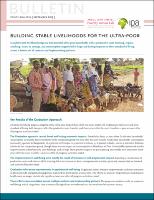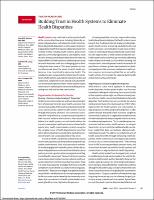Browsing by Title
Now showing items 34-53 of 299
-
Asia and the Pacific SDG progress report 2020.
(United Nation, 2020)
This report analyses trends as well as data availability for monitoring progress toward the Sustainable Development Goals (SDGs) in Asia and the Pacific and its five subregions. It assesses gaps which must be closed to achieve the goals by 2030. This assessment is designed to ensure the region’s actions remain on target, shortcomings are addressed as they arise, and all interested parties remain engaged. It is an invaluable resource for all stakeholders involved in prioritization, planning, implementation and follow-up of the 2030 Agenda for ... -
Association between mental health and executive dysfunction and the moderating effect of urban–rural subpopulation in general adolescents from Shangrao, China: a population-based cross-sectional study
(2022-08-23)
Objectives: To examine the association between mental health and executive dysfunction in general adolescents, and to identify whether home residence and school location would moderate that association. Design: A population-based cross-sectional study. Setting: A subsample of the Shanghai Children’s Health, Education, and Lifestyle Evaluation-Adolescents project. 16 sampled schools in Shangrao city located in downstream Yangtze River in southeast China (December 2018). Participants: 1895 adolescents (48.8% male) which were divided into ... -
Associations between structures and resources of primary care at the district level and health outcomes: a case study of diabetes mellitus care in Thailand
(2018-10-26)
Background: The structural factors of primary care potentially influence its performance and quality. This study investigated the association between structural factors, including available primary care resources and health outcomes, by using diabetes-related ambulatory care sensitive conditions hospitalizations under the Universal Coverage Scheme in Thailand. Methods: A 2-year panel study used secondary data compiled at the district level. Administrative claim data from 838 districts during the 2014–2015 fiscal years from the National Health ... -
Associations between the stringency of COVID-19 containment policies and health service disruptions in 10 countries
(2023-04-12)
Background: Disruptions in essential health services during the COVID-19 pandemic have been reported in several countries. Yet, patterns in health service disruption according to country responses remain unclear. In this paper, we investigate associations between the stringency of COVID-19 containment policies and disruptions in 31 health services in 10 low- middle- and high-income countries in 2020. Methods: Using routine health information systems and administrative data from 10 countries (Chile, Ethiopia, Ghana, Haiti, Lao People’s Democratic ... -
Balancing Reproductive and Productive Responsibilities: Childcare Strategies Implemented by Migrant Mothers in the Thailand–Myanmar Border Region
(2021-12-17)
Background: In Myanmar, formerly known as Burma, conflicts between ethnic minorities, the government, and the military have been ongoing for decades. Enduring unrest has caused thousands to flee to the region around Mae Sot, a city on Thailand’s western border. Women around the world assume a combination of reproductive and productive responsibilities, and during situations of armed conflict and displacement, conditions for women often worsen. This study investigated the parenting experiences of female migrants from Myanmar living in protracted ... -
Barriers and facilitators to neonatal health and care-seeking behaviours in rural Cambodia: a qualitative study
(2020-05-19)
Objectives: Neonatal mortality remains persistently high in low-income and middle-income countries. In Cambodia, there is a paucity of data on the perception of neonatal health and care-seeking behaviours at the community level. This study aimed to identify influencers of neonatal health and healthcare-seeking behaviour in a rural Cambodian province. Design: A qualitative study using focus group discussions and thematic content analysis. Setting: Four health centres in a rural province of Northern Cambodia. Participants: Twenty-four focus ... -
Beating the Middle-Income Trap in Southeast Asia
(The Heritage Foundation, 2014)
Since 2000, Southeast Asia has had some of the fastest growing economies in the world. Indonesia’s economy has enjoyed 6 percent annual growth—but will its lack of infrastructure and its commodity dependence soon reveal some cracks in its economy? The remarkable growth in the Philippines will not last unless domestic investment is elevated. Thailand’s growth has stalled amid political turmoil, and it is currently in a classic credit bubble. Vietnam still generates impressive growth, but it has a banking problem, high inflation, and ubiquitous ... -
Better Health Through Equity: Case Studies in Reframing Public Health Work
(American Public Health Association, 2015)
The efforts chronicled in this series of case studies are not only designed to improve health outcomes, they are also poised to save the country billions in health care spending. According to one study published in 2009, more than 30 percent of direct medical costs faced by African Americans, Hispanics and Asian Americans can be tied to health inequi- ties. Because of inequitable access to care, these populations are sicker when they do find a source of care and incur higher medical costs. That 30 percent translates to more than $230 billion over ... -
Big Data and the Study of Social Inequalities in Health: Expectations and Issues
(Frontiers in Public Health, 2018-10-26)
Understanding the construction of the social gradient in health is a major challenge in the field of social epidemiology, a branch of epidemiology that seeks to understand how society and its different forms of organization influence health at a population level. Attempting to answer these questions involves large datasets of varied heterogeneous data suggesting that Big Data approaches could be then particularly relevant to the study of social inequalities in health. Nevertheless, real challenges have to be addressed in order to make the ... -
Brain spotting session by Kritiya (Cohort 2019)
(The Equity Initiative, 2022-01-22)
Brainspotting (BSP) makes use of this natural phenomenon through its use of relevant eye positions and the process releases a wide range of emotionally and bodily-based conditions. BSP taps into and harnesses the body's natural self-scanning, self-healing ability. When a Brainspot is stimulated, the deep brain appears to reflexively signal the therapist that the source of the problem has been found. BSP can also be used to find and strengthen our natural resources and resilience. -
Breaking down the barriers: Understanding migrant workers' access to healthcare in Malaysia
(2019-07-03)
Background: Malaysia is widely credited to have achieved universal health coverage for citizens. However, the accessibility of healthcare services to migrant workers is questionable. Recently, medical fees for foreigners at public facilities were substantially increased. Mandatory health insurance only covers public hospital admissions and excludes undocumented migrants. This study explores barriers to healthcare access faced by documented and undocumented migrant workers in Malaysia. Methods: We use qualitative data from 17 in-depth ... -
Building capacity for health equity analysis in the WHO South-East Asia Region
(2019)
Leaving no one behind” is at the heart of the agenda of the Sustainable Development Goals, requiring that health systems be vigilant to how interventions can be accessed equitably by all, including population subgroups that face exclusion. In the World Health Organization (WHO) South-East Asia Region, inequalities can be found across and within countries but there has been a growing commitment to examining and starting to tackle them. Over the past decade in particular, WHO has been developing an armamentarium of tools to enable analysis of health ... -
Building Resilience and Health Equity in Myanmar
(The Equity Initiative, 2022-01-23)
A panel discussion to share and learn about the ongoing conflicts and the challenges to health equity development and resilience in the country -
Building stable livelihoods for the ultra-poor
(J-PAL and IPA Policy Bulletin., 2015) -
Building Trust in Health Systems to Eliminate Health Disparities
(JAMA, 2019-07-09) -
Can mHealth and eHealth improve management of diabetes and hypertension in a hard-to-reach population? —lessons learned from a process evaluation of digital health to support a peer educator model in Cambodia using the RE-AIM framework
(2020-10-05)
Background: The burden of non-communicable diseases (NCDs) is increasing in low- and middle-income countries (LMICs) where NCDs cause 4:5 deaths, disproportionately affect poorer populations, and carry a large economic burden. Digital interventions can improve NCD management for these hard-to-reach populations with inadequate health systems and high cell-phone coverage; however, there is limited research on whether digital health is reaching this potential. We conducted a process evaluation to understand challenges and successes from a digital ...

